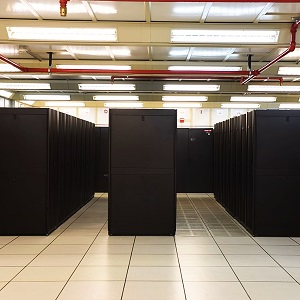Magnetic tapes are a waste of data storage technology. They are almost seventy years old. Nevertheless, they are still used. And as can be seen, they still have the potential for further research and development. The new magnetic tape, whose surface contains strontium ferrite particles, allows you to store up to 317 GB of data per square inch of tape. The data centers are already grinding their teeth on it.
–
Data center of the Argentine company ARSAT. Credit: IMarcoHerrera / Wikimedia Commons.
–
When it comes to magnetic tapes, it’s like broadcasting to witnesses. We still have some here and there at home, due to nostalgia. They are incomprehensible to 21st century children. Yet magnetic tapes have long kept pace with hard drives. They tend to be cheap and have a large area to record data. And now maybe their time is coming again, thanks to technological progress. IBM and Fujifilm have joined forces to create a prototype of a new type of data magnetic tape that offers a record memory capacity of 580 TB.

Structure of a new magnetic tape and comparison of surfaces with particles of barium ferrite and strontium ferrite. Credit: Fujifilm.
–
Magnetic tapes have already proven admirable viability. They have been in operation since their invention in 1952. In addition to their favorable price and large amount of data, they are also durable, have a long service life, are energy efficient and are easy to produce in bulk.
The new IBM and Fujifilm prototype can hold 317 GB of data per square inch of tape (6.45 square centimeters). This tape is 4.3 micrometers thick and 1.3 kilometers long, if anyone unwrapped it all. All these parameters together lead to a final capacity of 580 TB. This is a significant improvement over the previous record of 2017, when IBM and Sony created magnetic tape, which could store 201 GB of data per square inch of tape. Its total capacity at that time was 330 TB.

Do you remember? Credit: Tomasz Sienicki / Wikimedia Commons.
–
A major improvement over the new magnetic tape, which made it possible to break the record, is the use of a new material developed by Fujifilm. Most modern magnetic tapes contain magnetic particles of barium ferrite. In this case, however, similar strontium ferrite particles were used in Fujifilm. Strontium ferrite particles take up up to 60 percent less space, so much more can fit on the same surface area of the magnetic tape. Also new is the non-magnetic layer beneath these particles, which improves the mechanical properties of the tape. This makes the tape more smooth, so it can get closer to the mechanics of the control device.
IBM’s role in creating the new prototype was to develop new heads for reading and writing data, plus the entire drive that handles them. According to IBM, the resulting device allows you to set the heads with an accuracy of 3.2 nanometers, which is also a world record. If a new type of data storage medium emerges from this prototype, it could be particularly useful for data centers. It faces a constant increase in the amount of data around the world that needs to be processed, stored and also transferred as needed.
Video:2015: Recording Media: Barium Ferrite technology goes beyond the expectation | FUJIFILM
Literature
– .


